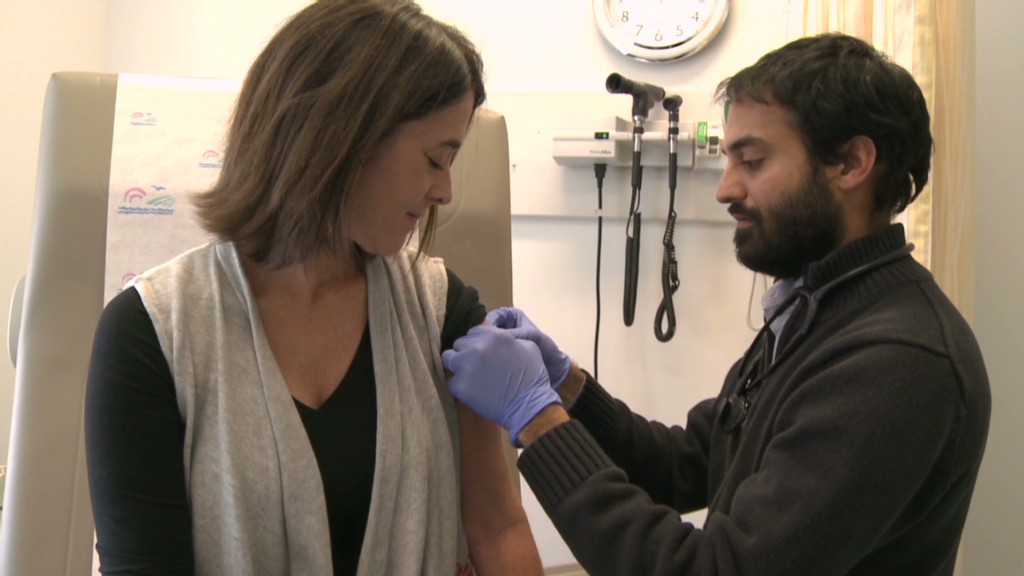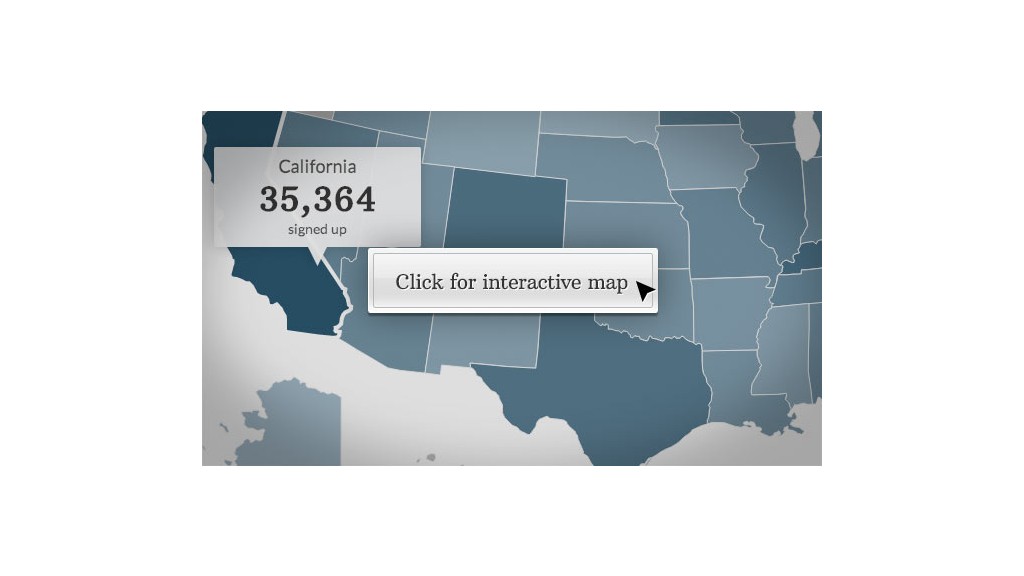Some 106,185 people signed up for Obamacare in its first month of operation, a period marred by major technological problems with both the federal and state enrollment websites.
Fewer than 27,000 Americans selected an insurance plan through the federal healthcare.gov site, which is handling enrollment for 36 states, according to figures released Wednesday by the Obama administration. The site is still far from fully operational, leaving tech experts racing to get it working by month's end, as the administration promised.
The states running their own exchanges are responsible for the bulk of the sign-ups. Nearly 79,400 people have selected a plan through state-based exchanges, with California leading the way with nearly 35,400 selecting a plan. States have also been battling system errors, with Oregon having yet to accept online applications. Only 11 states reported sign-up figures Wednesday.
These figures reflect people who have selected insurance plans through the exchanges, but not necessarily paid for them. Americans have until Dec. 15 to pay if they want coverage to begin on Jan. 1. Open enrollment lasts through March 31.
Share your story: Are you signing up for Obamacare?
In addition to the sign-ups, nearly 975,500 people have created accounts on the exchange sites and are eligible to buy coverage, but have not yet selected a plan. Those with incomes below $46,000 for individuals and $94,200 for families of four are eligible for premium subsidies.
Separately, another 396,261 Americans have been determined eligible for Medicaid or Children's Health Insurance Program (CHIP). Only half of states and the District of Columbia have opted to expand this public health program, which allows states to cover all adults up to 138% of the poverty line with the federal government paying the full tab for the first three years and providing large subsidies thereafter.
Medicaid applications have outpaced exchange sign-ups as states are able to steer low-income folks to state Medicaid sites, avoiding the exchanges' technical woes. For instance, Washington has added more than 48,000 to its Medicaid rolls, but only saw only 7,300 people sign up for private insurance.
More people have signed up for insurance in recent weeks. A CNN tally shows that more than 120,000 people have picked and paid for an insurance plan in the 11 states reporting figures.
Interactive map: How many have signed up for Obamacare
The heavily anticipated initial figures are a long way from the 7 million people the Congressional Budget Office projected would gain coverage through the exchanges in 2014 and 9 million who would enroll in Medicaid or CHIP.
As late as September, the administration expected nearly 500,000 people to enroll in October, according to an internal memo obtained by CNN, but revised its figure to 800,000 in October and November combined, in light of the continuing technical problems.
Administration officials have been downplaying enrollment expectations as problems with the exchange sites continued to stymie visitors' attempts to create accounts and search for insurance plans. President Obama has pointed to the fact that only a hundred people signed up for coverage in Massachusetts in 2006 when health care was overhauled there, but thousands signed up by the end of that year.
"We expect enrollment will grow substantially throughout the next five months, mirroring the pattern that Massachusetts experienced," said Health and Human Services Secretary Kathleen Sebelius. "We also expect that the numbers will grow as the website, healthcare.gov, continues to make steady improvements."
Related: White House says Obamacare site improving

The sites' technical problems have left many Americans and state officials racing to find alternate ways to enroll. Healthcare.gov added a plan browser feature that allows visitors to see sample prices for coverage in their area, though the actual plans may be much more costly. Potential enrollees are being encouraged to sign up through call centers or paper applications. They can also go directly to insurers, though their subsidy eligibility would have to be determined separately.
In Illinois, state officials asked counselors tasked with helping people sign up to delay appointments with consumers until December, when the federal website is expected to work better.
The number of people signing up is just part of what determines the success of the site. The exchanges also have to attract many younger, healthier people to balance the older, sicker Americans who are more desperate for coverage and are most costly for insurers. The administration did not release a breakdown of who has signed up so far, but Sebelius said it will provide those details in the future.



